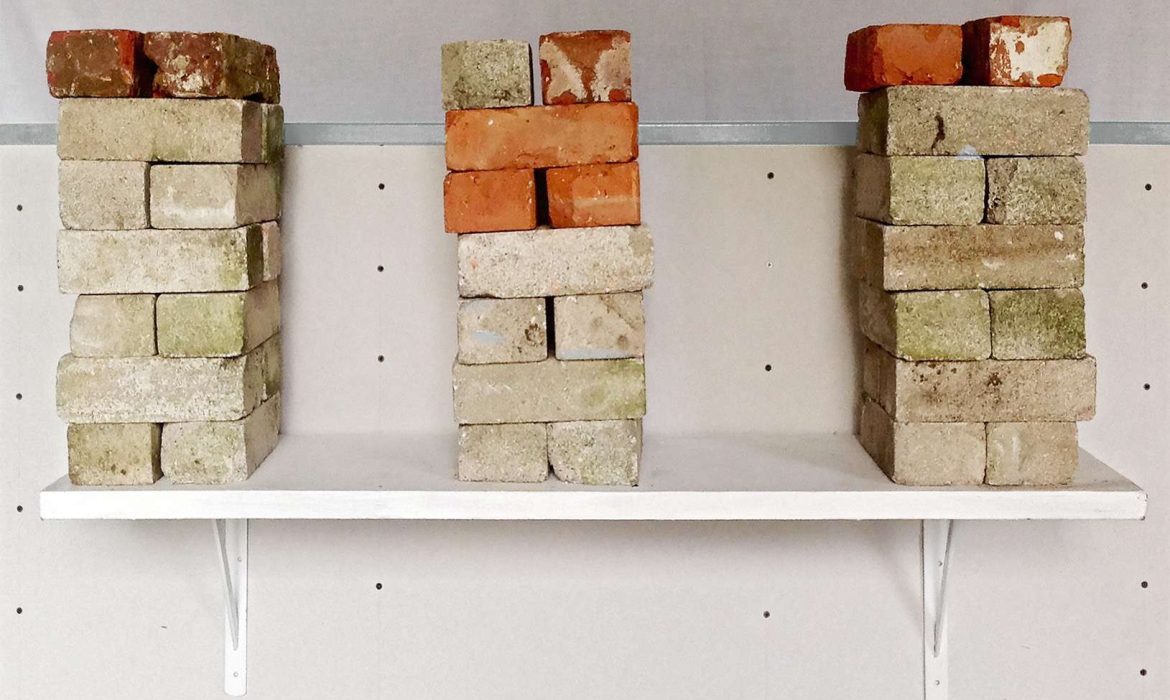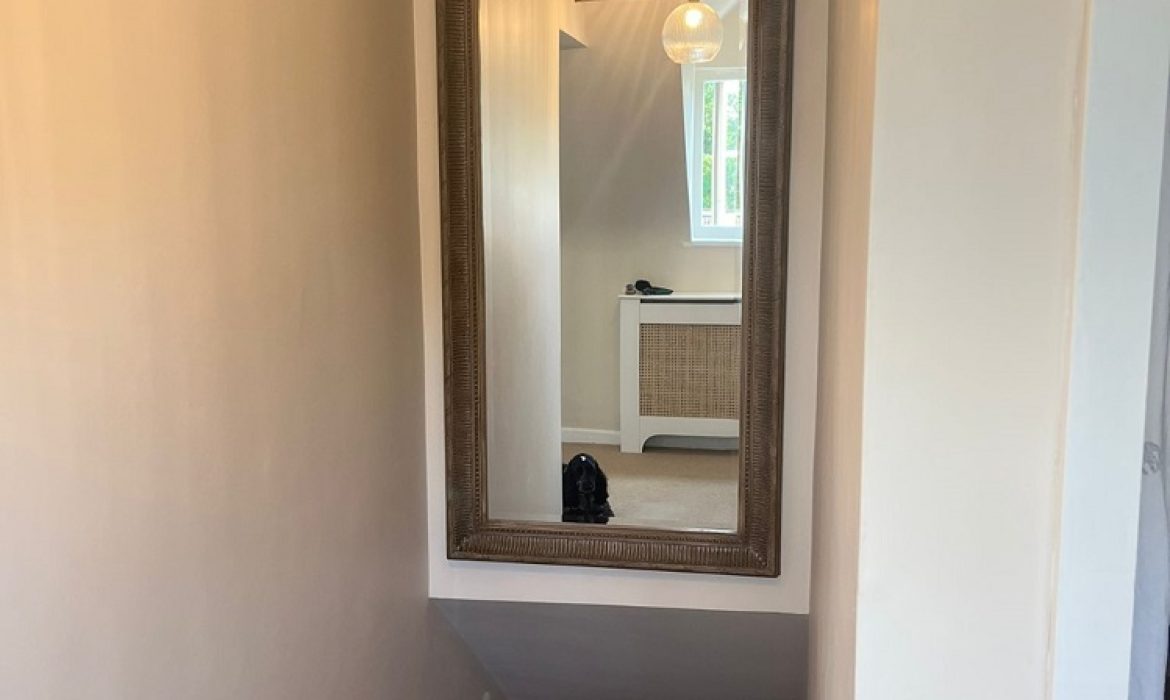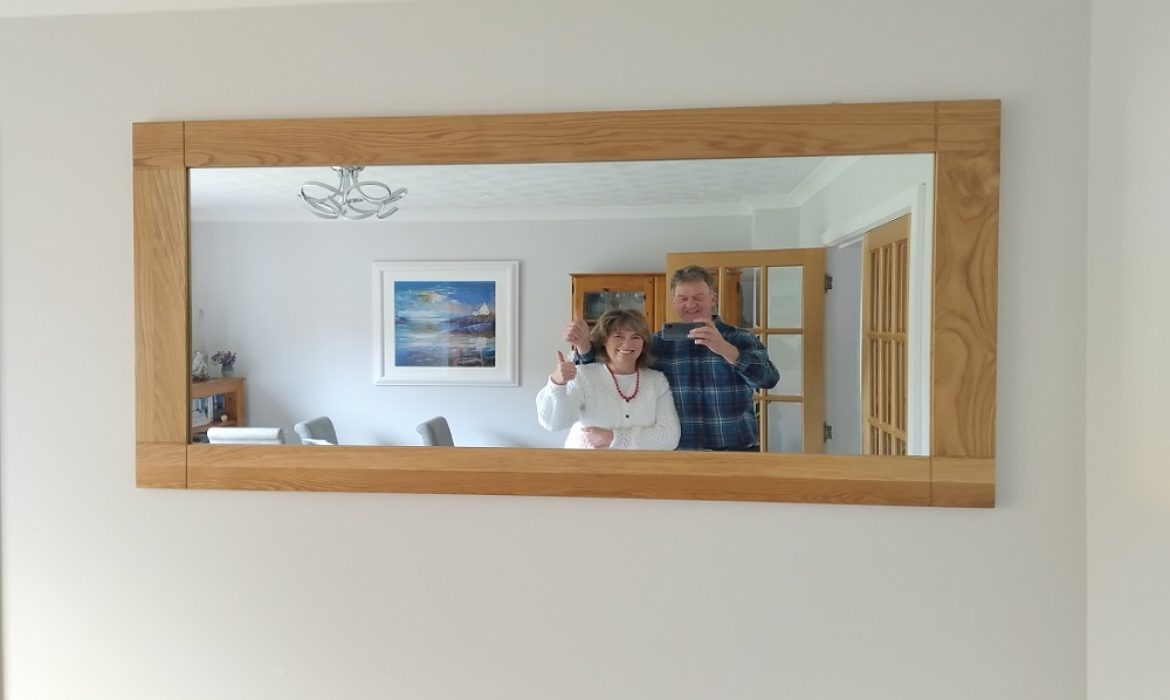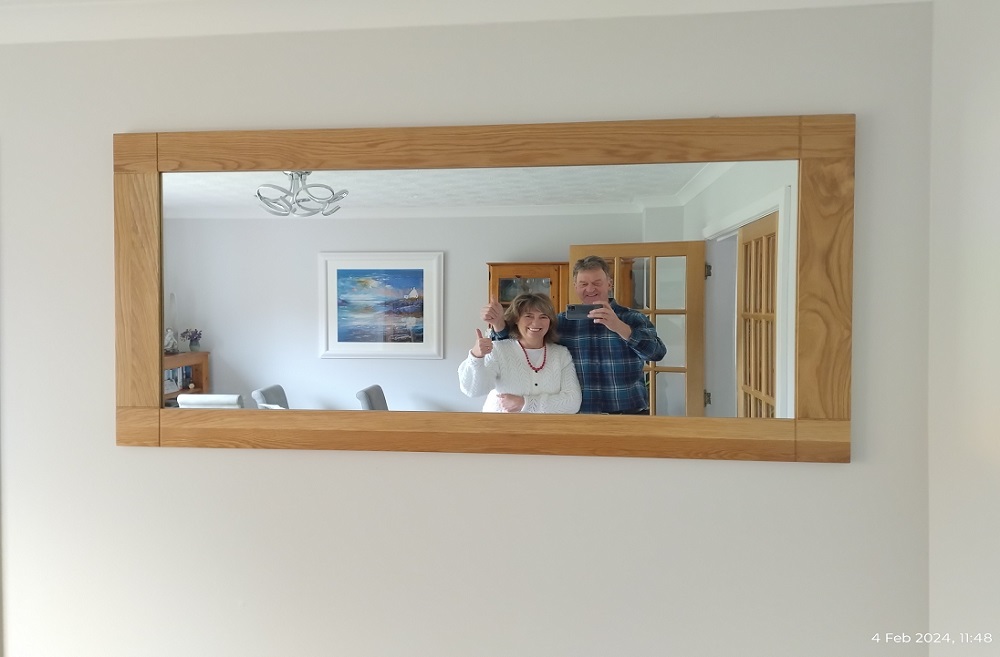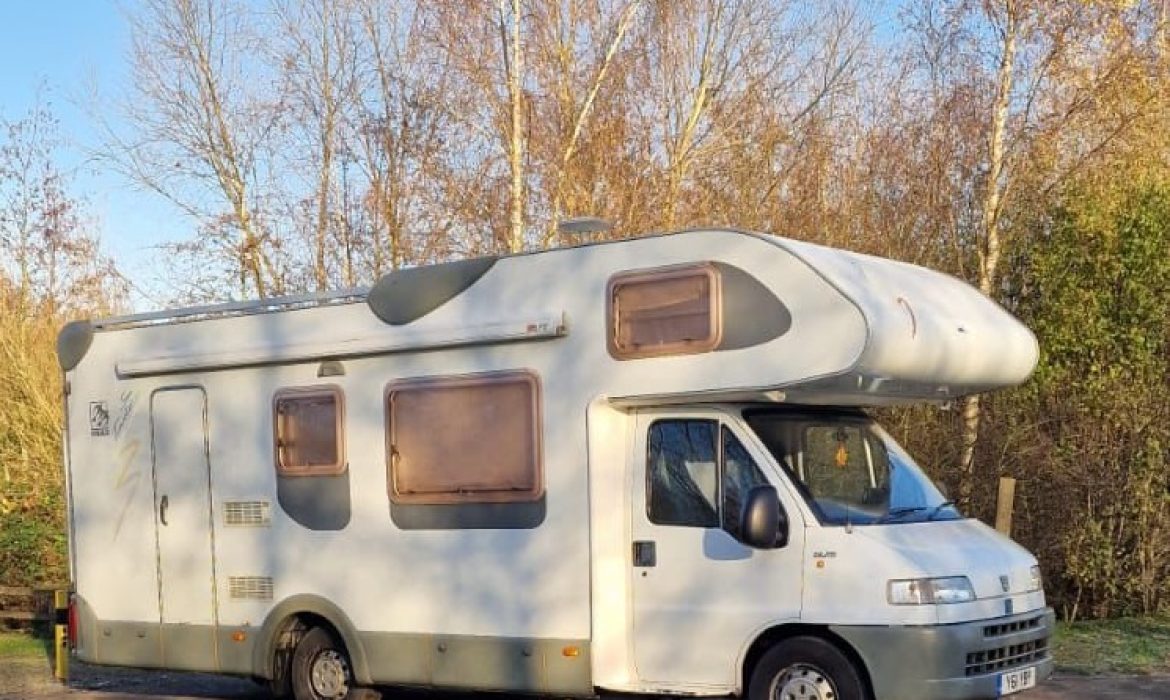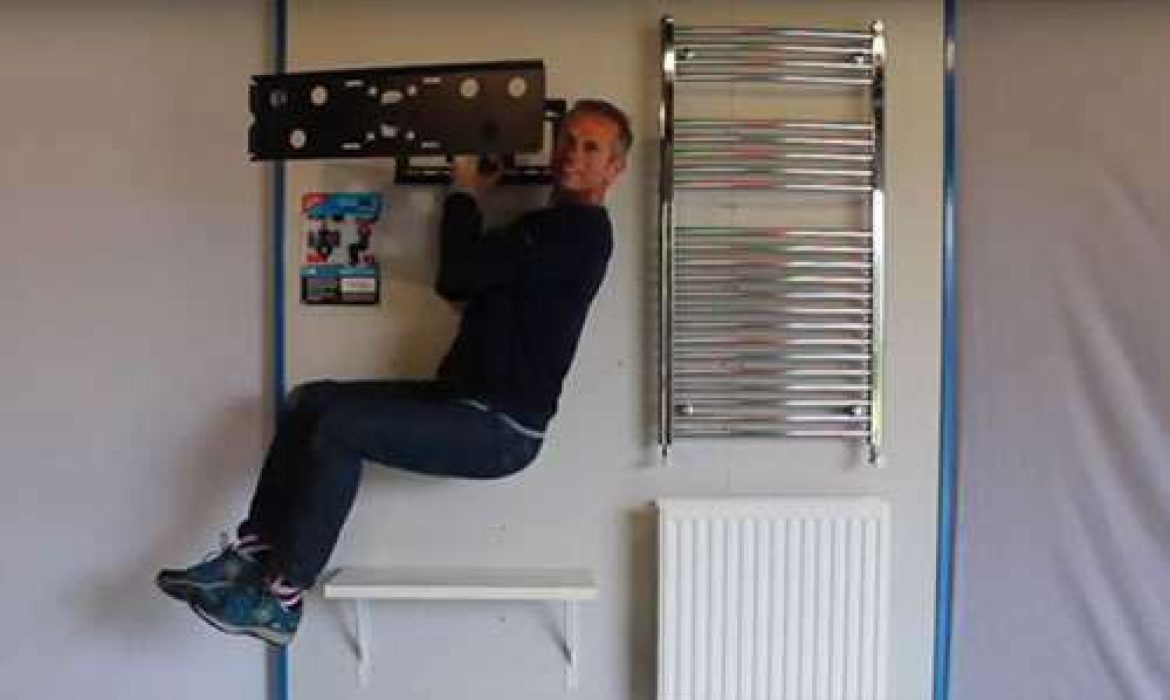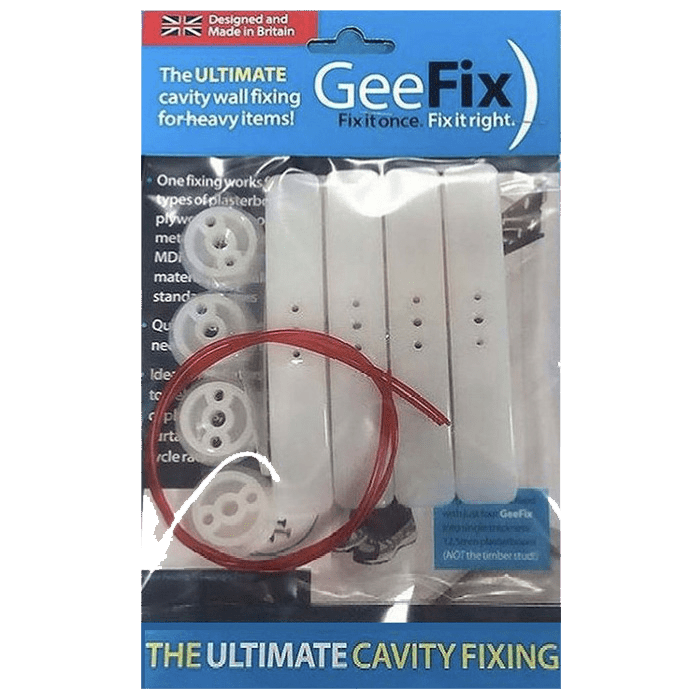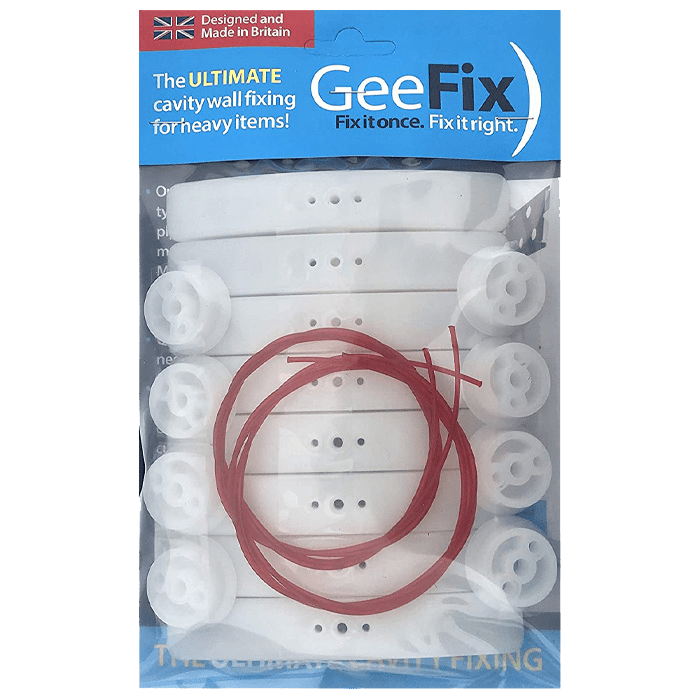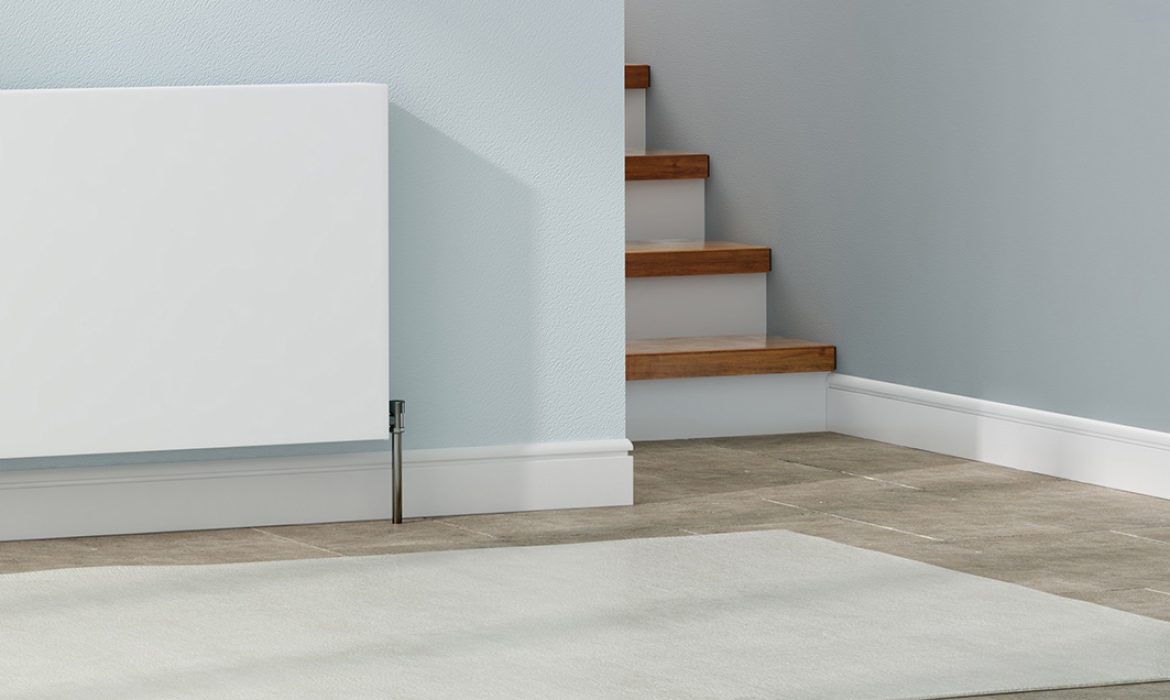Fixing heavy items to plasterboard walls
How to wall mount TVs and other heavy items in your home
Most modern homes built in the UK today feature internal plasterboard cavity walls. Fixing heavy items to plasterboard walls requires a suitable cavity wall fixing.
Fixings designed for installing items onto plasterboard or drywall cavity walls are known by many terms, such as
plasterboard cavity wall fixings, hollow wall anchors, drywall anchors, cavity wall anchors,
spring toggles, and Brolly Bolts. Regardless of their name, they all serve the same purpose: to secure items
to plasterboard or drywall. Available in various designs, these fixings utilize an anchor inserted into the cavity wall to support
the item you wish to install.
Strength
The strength of these fixings primarily depends on the size and shape of the anchor you can insert into
the cavity. The larger the flat surface area of the anchor, the stronger the fixing. In contrast, smaller surface areas yield weaker fixings. Some fixings, such as
Toggler or Spring toggles, include a metal wall channel for the wall anchor. These channels, when tightened, tend to cut into the plasterboard, which can weaken
the installation over time. Notably, the strongest fixing on the market is GeeFix.
Considerations When Choosing the Right Drywall Anchor
With so many fixings on the market today, deciding which to use for your project can be challenging. To select the appropriate cavity wall fixing, consider these three important factors:
- The weight and size of your item
- The value of your item
- The substrate to which you will install your item
The Weight and Size of Your Item
It’s crucial to remember that some fixings may not suit heavy loads, such as wall-mounted TVs, radiators, or heated towel rails. Although kitchen cupboards and shelving might seem light, they often carry substantial weight.
The Value of Your Item
For instance, when hanging an expensive mirror, choose a fixing that ensures reliable security. This way, you can avoid installation failures.
The Substrate
Many different substrates exist, such as plywood, lath and plaster, or wattle and daub. Currently, plasterboard, often referred to as drywall, remains the most common substrate in new builds across the UK.
A Reliable Plasterboard Fixing at GeeFix
GeeFix offers a dependable heavy-duty plasterboard fixing or drywall anchor designed to secure heavy loads. Thanks to its patented unique design, the GeeFix wall anchor provides exceptional strength.
With a flat surface measuring 125mm x 20mm, the anchor is much larger than any other fixing, delivering unparalleled support.
Moreover, the larger size of the anchor redistributes the load away from the installation hole in the plasterboard, ensuring a more secure installation. We compare this concept to walking on deep snow: without snowshoes, it’s nearly impossible, as they disperse your weight across a broader area. This principle applies to the large anchor as well.
GeeFix Components
The Anchor/Backplate
The anchor is crafted from nylon, providing a degree of flexibility. It features a unique curved design and measures 125mm by 20mm, allowing it to fit into a cavity depth of just 3cm.
Three holes in the center of the backplate accommodate fixing screws. Anti-rotational spikes on the backplate securely grip the plasterboard, preventing it from spinning during installation.
The Plug
The plug measures 30mm in diameter and has three holes for fixing screws that align with the backplate during installation.
Screws
You will find two shorter side screws and one longer center screw included.
Installation Cord
A nylon installation cord is also included.
Installation
To install the GeeFix cavity wall fixing, you will need a hole saw and a flat bit/spade bit.
Start by drilling a 25mm hole at your desired fixing point.
Assemble the fixing as shown before installation.
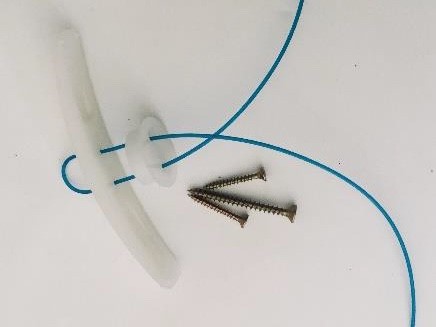
Next, insert the backplate into the cavity and position it centrally in the hole.
Then, slide the plug down the installation cord onto the backplate/anchor through the plasterboard hole. This action will align all the fixing holes.
In the next step, insert the center fixing screw and pull firmly on the installation cord. This will engage the anti-rotational spikes into the plasterboard, ensuring a secure fit. Then, tighten the center fixing screw while maintaining tension on the cord. Be careful not to overtighten.
Once you tighten the center screw, the backplate/anchor will flatten against the plasterboard, and you can pull out the installation cord.
Finally, insert and tighten the two side screws, and then remove the center fixing screw. You now have a reliable fixing point for your item!
Visit our instruction page for detailed step-by-step guides on installation.
A Versatile Fixing
After installation, the GeeFix fixing can adapt to suit your needs.
Using Different Size and Type of Screws
You can remove and replace the center fixing screw with various types of screws, ranging from 8mm coach screws to 3mm cup hooks.
Larger diameter screws will self-tap through the insert plug into the backplate. Using a lubricant aids the installation of larger screws.
Using the Backplate as an Extra Fixing Point
If two fixing points are close together, such as with bathroom accessories like a toilet roll holder, you can drill an extra fixing point into the backplate. This will provide two fixing points from one installation.
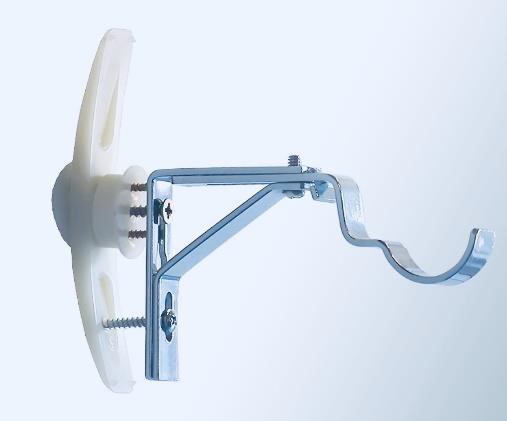
Fixing Items with More Than One Anchor Point
Plasterboard Repair
GeeFix fixings can also repair installations where another type of fixing or wall anchor has failed. For detailed instructions, check our blog post titled ‘Plasterboard Repair – How to Fix Loose Drywall Anchor’.
A Word of Caution!
All cavity wall fixings and drywall anchors have limitations. Remember this when planning your project, especially when installing shelves or cantilever TV wall mounts to plasterboard. The further an item extends from the wall, the greater the stress on the fixings.
A Note on Substrates
Drywall and plasterboard are synonymous, differing only by name based on location. These materials commonly construct interior walls and ceilings in modern buildings. Plasterboard varies in thickness, including insulated options.
Lath and plaster has historically made interior walls and ceilings. Horizontal strips of wood are fixed across wall studs and covered in plaster, similar to wattle and daub.
Wattle and daub is a construction method used for over 6,000 years. It involves weaving a lattice of wooden strips (wattle) and daubing it with a sticky mixture of soil, clay, sand, animal dung, and straw. Many historic buildings in the UK include this method.
Lastly, Paramount/egg box walls are made from two layers of wall board bonded to a cellular core of stiff cardboard.
Using GeeFix Fixings on Different Substrates
Lath and Plaster and Wattle and Daub
When installing onto lath and plaster walls or wattle and daub, use a 25mm hole saw instead of a flat/spade bit.
Flat/spade bits may shatter the laths, weakening the installation. Hole saws create neat holes without damaging the laths.
When placing the backplate inside the cavity, position it vertically to span across the horizontal laths on either side of the hole for a stronger installation.
Paramount/Eggbox Walls
When fixing GeeFix drywall anchors onto Paramount/eggbox walls, drill a 25mm hole where you intend to install.
Collapse the cardboard strips within the cavity next to the hole using a chisel or similar tool to the width and length of the backplate/anchor, allowing for easy insertion.
Dot and Dab
Dot and dab, also known as a drylined wall, involves attaching plasterboard to a brick or concrete wall using adhesive dots. GeeFix cavity wall fixings are effective on these walls if a minimum cavity of 30mm exists to accommodate the backplate.
Stud Work
Modern interior walls typically use a wooden frame where plasterboard attaches. GeeFix wall anchors function well on this type of wall.
Double Thickness Plasterboard
Doubling plasterboard sheets enhances fire protection, soundproofing, or wall strength. Installing GeeFix drywall anchors in double thickness plasterboard is straightforward; just use longer fixing screws than those included in the pack.
Thermal Insulated Plasterboard
Insulated plasterboard comes in thicknesses from 25mm to 75mm. Use longer installation screws than provided when mounting GeeFix cavity wall fixings in insulated plasterboard.
A Note on Plasterboard
Ensure the condition of the plasterboard is sound. Fixing heavy items to plasterboard walls that are damp or deteriorating will weaken the installation.
About GeeFix
GeeFix was invented by a plumbing and heating engineer with over 40 years of experience in the trade. We take pride in designing and developing GeeFix in the UK while also manufacturing it in Shropshire to support local industry and British business.
The GeeFix system aims to secure heavy items to plasterboard and drywall walls efficiently. Modern home interiors predominantly consist of studwork and plasterboard, making GeeFix the ideal product for mounting those heavy objects. From TVs and radiators to towel rails, shelving, cabinets, cupboards, and mirrors, many items can be securely fixed to plasterboard using GeeFix.
These hollow wall fixings also help reattach objects to plasterboard walls where previous fixings have failed. For example, when a radiator separates from a wall, a GeeFix fixing can often be installed in the same place as the previous fixing, reducing the amount of repair work needed on plasterboard.
Moreover, GeeFix can adapt for smaller objects, like bathroom accessories, where fixing holes are closely spaced. In these instances, a single fixing can secure the item by employing the backplate’s length to provide additional fixing points.
Can you hang a tv on drywall?
Introduction to GeeFix Plasterboard Fixings
Are you wondering how to securely hang a TV on drywall? Look no further than GeeFix plasterboard fixings. These innovative solutions allow you to mount heavy items like TVs, mirrors, and paintings safely on drywall.
Why Choose GeeFix?
Traditional methods for hanging heavy items often lack the stability you need. With GeeFixplasterboard fixings, you can confidently hang even the heaviest objects. They grip the back of the drywall, distribute weight evenly, and minimize the risk of damage.
If you want to hang a large painting or a heavy mirror, choose GeeFix for unmatched strength and reliability. Enjoy peace of mind knowing your TV, mirror, or painting is securely mounted, allowing you to showcase your decor with confidence.
Hanging a TV on Drywall
Hanging a TV on drywall becomes easy with GeeFix . Many consider these the best heavy-duty drywall fixings for TVs. Popular DIY YouTuber Charlie DIYte reviewed GeeFix and said, “A stronger plasterboard fixing than anything I’ve ever encountered before.” Click here to see Charlie DIYte full review..
You can hang a TV on drywall without studs using two or more fixings. To learn how, watch the video below or check the instructions on this page.
Hanging a Heavy Mirror on Drywall
Wondering how to hang a heavy mirror on drywall? Your search ends here. GeeFix provides the ideal solution for securely hanging heavy objects on drywall.
Take a look at the pictures below of customers demonstrating how to hang a large mirror on drywall with GeeFix .
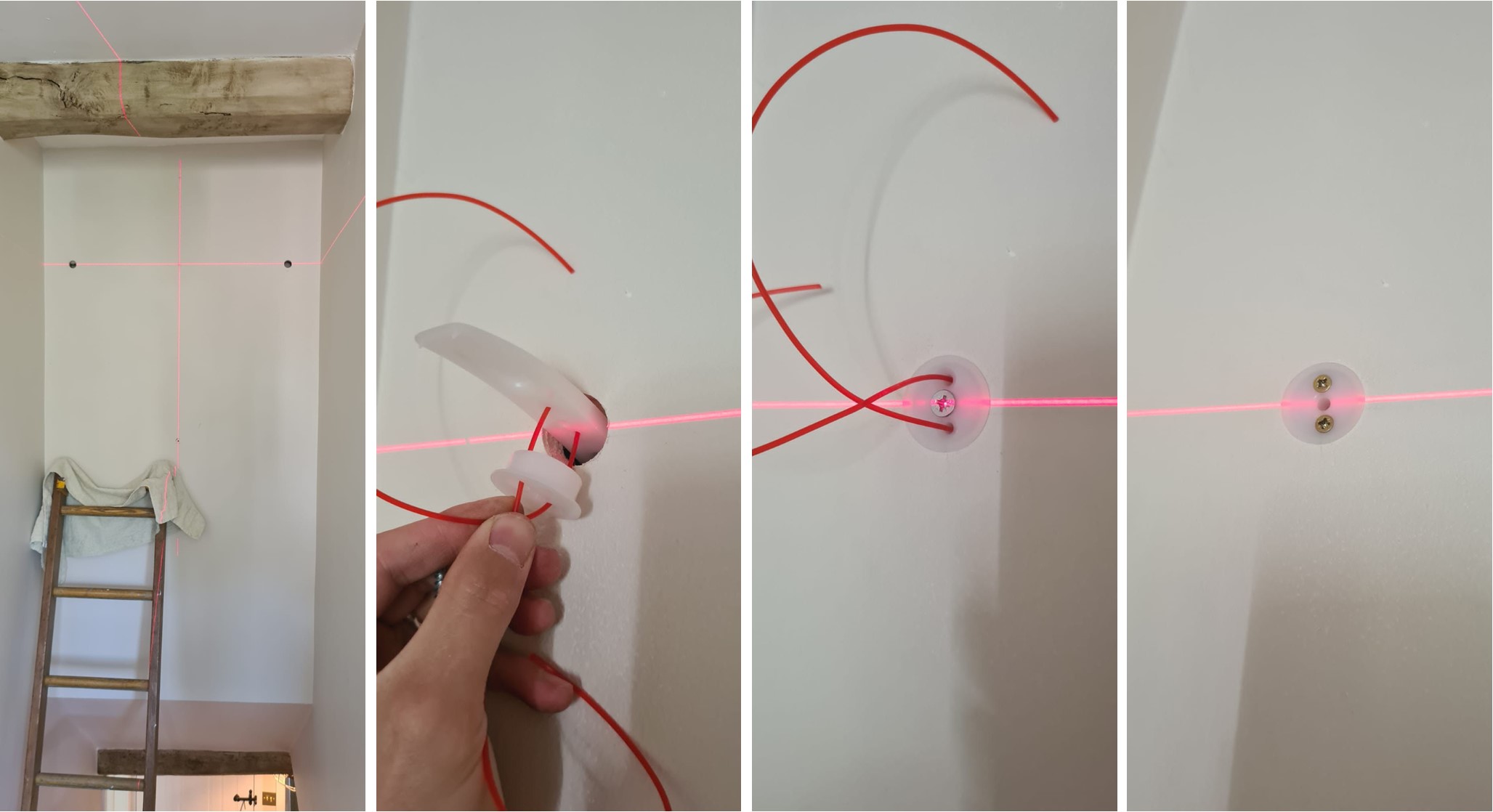
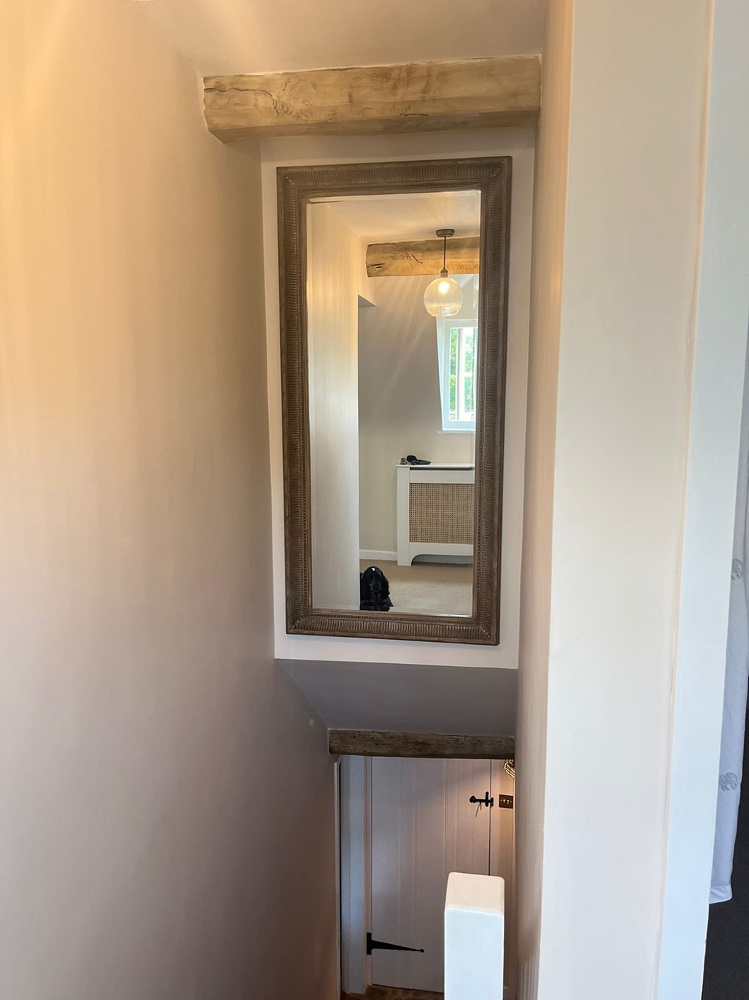
About GeeFix
GeeFix was invented by a plumbing and heating engineer with over 40 years of experience in the trade. We take pride in the fact that we designed and developed GeeFix in the UK, and we manufacture it in Shropshire to support local industry and British business.
We developed GeeFix to secure heavy items to plasterboard and drywall walls. As modern homes often use studwork and drywall, GeeFix serves as the perfect choice for heavy-duty fixings. You can securely fix TVs, radiators, heavy mirrors, towel rails, shelving, cabinets, cupboards, and curtain rails to plasterboard.
Refixing and Adapting
Additionally, you can use these heavy-duty drywall fixings to reattach an object when a different fixing fails. For instance, if a radiator pulls away from the wall, you can install a GeeFix anchor in the same position as the old one, often reducing repair work.
GeeFix also adapts well for smaller items, like bathroom accessories, where fixing holes are close together. In those cases, you can use one fixing to secure the item, leveraging the backplate’s length for additional support.
Can be adapted for use with smaller objects, such as bathroom accessories, where fixing holes are close together. In these instances, one fixing can be used to secure the item by using the length of the backplate in the cavity for additional fixing points.

Hanging a mirror on plasterboard
Are you wondering how you go about hanging a large heavy mirror on plasterboard? GeeFix is the solution!
This 20kg solid oak furniture land mirror was hung successfully using our plasterboard fixings. One of our happy customers sent us the photograph below:
Hanging Heavy Mirror on Plasterboard
We love receiving photos from happy customers who successfully install heavy mirrors using GeeFix.
Below is a picture of a satisfied customer who attached a 20kg oak land mirror to a plasterboard wall with our GeeFix fixings.
Customer Fixing 25kg Mirror to Plasterboard
Another customer asked how to hang a heavy mirror on a plasterboard wall. They discovered that GeeFix plasterboard fixings provided the perfect solution. As shown in the images below, they used a pink laser level to achieve a flawless installation!
As you can see from the images below he used a pink laser level to do the job perfectly!
Hanging a mirror on plasterboard becomes easy with GeeFix.


GeeFix
Gary Williams, a retired plumber with over 30 years of experience, invented GeeFix . We take pride in the fact that we designed and developed this product in the UK and manufactured it in Shropshire, supporting local industry and British business.
GeeFix was created to secure heavy items to plasterboard and drywall walls. Many modern homes use studwork and plasterboard, making GeeFix the ideal choice for mounting various heavy objects. You can securely fix TVs, radiators, towel rails, shelving, cabinets, cupboards, mirrors, and curtain rails to plasterboard with our fixings.
Additionally, these hollow wall fixings work well when you need to reattach an object to a plasterboard wall after another fixing fails. For instance, if a radiator pulls away from a wall, you can install a GeeFix anchor in the same spot as the old one, which often reduces the repair work needed on the plasterboard.
Moreover, you can adapt GeeFix for smaller items, such as bathroom accessories, especially where fixing holes are close together. In these cases, one fixing can securely hold the item by utilizing the backplate’s length within the cavity for added support.
How to mount a large TV onto plasterboard/drywall studwork
It is very important to use a bracket with a large rectangular base plate. The dimensions of the baseplate are usually 480mm length 240mm width or thereabouts.
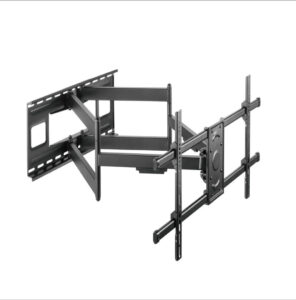
Do not use the type of bracket with a narrow vertical type of base plate:
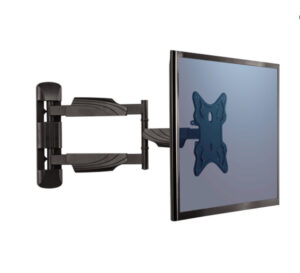
Plasterboard/drywall is installed onto a wooden/metal framework. The vertical studwork is usually centred at 400mm 450mm 500mm or 600mm, most commonly 500mm centres. Use a stud finder device to find the centres.
When using a 480mm x 200mm baseplate the chances are that you will be able to get a fix into one of the vertical studs. You can adapt the baseplate if required. If there isn’t a fixing hole in the baseplate which falls in line with the vertical stud, simply drill a hole in the baseplate to match.
For the other fixing points use GeeFix cavity wall fixings. Position the backplate/anchor in the cavity either vertically or at a 45degree angle or thereabouts. The screws provided in the pack will be strong enough for your installation, just use metal washers on the screws to suit your bracket fixing points.
About GeeFix
GeeFix was invented by a plumbing and heating engineer with over 40 years’ experience in the trade. We are proud that not only was GeeFix designed and developed in the UK, but that it is also manufactured in Shropshire supporting local industry and British business.
It was developed with the aim of creating a fixing which would secure heavy items to plasterboard/drywall walls. The interiors of modern homes are constructed from studwork and plasterboard so that GeeFix is the ideal product for fixing those heavy objects to cavity walls. TVs, radiators, towel rails, shelving, cabinets, cupboards, mirrors, curtain rails ……… just some of the many items that can be securely fixed to plasterboard with our fixings.
These hollow wall fixings can also be used to refix an object to a plasterboard wall where a different type of fixing has failed. For example, where a radiator has come away from a wall, a GeeFix fixing can be installed in the same position as the failed fixing and so often reduce the amount of work necessary to repair plasterboard.
Can be adapted for use with smaller objects, such as bathroom accessories, where fixing holes are close together. In these instances, one fixing can be used to secure the item by using the length of the backplate in the cavity for additional fixing points.
How to fix a TV bracket to a caravan wall
Can You Mount a TV on a Static Caravan Wall?
Many people ask, “How do I fix a TV bracket to a caravan wall?” or “What are the best fixings for caravan walls?” In this guide, we’ll show you how to securely mount your TV using GeeFix fixings and provide advice on motorhome TV bracket fitting.
Understanding Caravan Wall Construction
Before you begin, it’s crucial to understand the construction of your caravan walls. Caravan walls typically fall into two categories:
- Single-Skinned Walls: These walls consist of a single layer of material, such as plywood or aluminum. They are lightweight and cost-effective but offer limited insulation. Single-skinned walls can make it trickier to find secure fixing points for heavier items like TVs.
- Double-Skinned Walls: In contrast, double-skinned walls feature two layers of material with insulating material (such as styrofoam or fiberglass) sandwiched between them. These walls offer better insulation and durability, although they are heavier and more costly. For double-skinned caravan walls, GeeFix fixings work well, as they provide extra strength when fitting between the layers.
Some static caravans may also use composite materials, like GRP (Glass Reinforced Plastic), offering a balance of strength, insulation, and weight. The material and structure of your walls will influence the type of fixings you need for mounting a TV.
Best Fixings for Static Caravan Walls
For static caravan wall fixings, especially when mounting heavier items like TVs, it’s important to choose fixings that are strong enough for thinner or composite walls. GeeFix fixings are designed specifically for hollow walls and provide secure support for your TV bracket, whether the walls are single or double-skinned.
How to mount a TV in a Caravan or Motorhome
When it comes to motorhome TV bracket fitting, the process is similar to static caravans, but you must also account for movement while the vehicle is in motion. Here’s a basic step-by-step guide:
- Identify the Wall Type: Determine if your wall is single-skinned, double-skinned, or composite.
- Locate Reinforced Areas or Studs: If possible, find the strongest areas in the wall to mount the TV bracket.
- Choose the Right Bracket and Fixings: Select a lightweight bracket that fits your TV, and use GeeFix fixings for extra strength. These fixings are perfect for hollow walls, providing the support needed to hold the weight of a TV.
- Drill Pilot Holes and Install Fixings: Once you’ve chosen your location, drill pilot holes carefully and insert the GeeFix anchors.
- Mount the Bracket and TV: Attach the bracket to the wall and secure the TV according to the bracket instructions.
Conclusion: Can You Mount a TV on a Static Caravan Wall?
Yes, you can mount a TV on a static caravan wall, but it’s essential to use the right fixings and understand your wall’s construction. For both static caravans and motorhome TV bracket fitting, GeeFix fixings provide a reliable solution that ensures your TV is securely mounted without damaging the walls.

Share Your Experience
Have you used GeeFix to mount a TV in your caravan or motorhome? We’d love to hear your success stories! Perhaps you’ve installed a curtain rail or a heavy light fixture using GeeFix. Contact us here or send an email to gary@geefix.com.
About GeeFix
GeeFix was invented by Gary Williams who is a retired plumber with over 30 years’ experience in the trade. We are proud that not only was GeeFix designed and developed in the UK, but that it is also manufactured in Shropshire supporting local industry and British business.
It was developed with the aim of creating a fixing which would secure heavy items to plasterboard/drywall walls. The interiors of modern homes are constructed from studwork and plasterboard so that GeeFix is the ideal product for fixing those heavy objects to cavity walls. TVs, radiators, towel rails, shelving, cabinets, cupboards, mirrors, curtain rails ……… just some of the many items that can be securely fixed to plasterboard with our fixings.
These hollow wall fixings can also be used to refix an object to a plasterboard wall where a different type of fixing has failed. For example, where a radiator has come away from a wall, a GeeFix fixing can be installed in the same position as the failed fixing and so often reduce the amount of work necessary to repair plasterboard.
Can be adapted for use with smaller objects, such as bathroom accessories, where fixing holes are close together. In these instances, one fixing can be used to secure the item by using the length of the backplate in the cavity for additional fixing points.
Drywall Anchors for Heavy Items
What are the best drywall anchors for heavy items?
The best drywall anchors for heavy items are GeeFix. Before their introduction, hanging heavy objects on plaster walls often posed a challenge due to limited anchor options on the market.
GeeFix drywall anchors come from a plumbing and heating engineer with over 40 years of experience in the field. After struggling to find reliable anchors that could support TVs and radiators on hollow walls, he designed GeeFixto be the strongest drywall anchor available.
Not only are these anchors the strongest on the market, but they also offer remarkable versatility. They can securely attach to various materials, including lath and plaster, plasterboard, insulated plasterboard, and wattle and daub.
Expert DIY YouTuber Charlie DIYte tested these wall anchors against leading brands, and he found that GeeFix stands out as the strongest option.
Additionally, GeeFix is ideal for reattaching objects to hollow walls when other fixings fail. For example, if a radiator pulls away from the wall, you can install a GeeFix anchor in the same spot, often minimizing the repair work needed on the drywall.
To learn how to repair an installation after a previous wall anchor has failed, check out this article. For step-by-step guidance on fixing a radiator to drywall, see this article.
Furthermore, GeeFix anchors adapt well for smaller items like bathroom accessories, especially where fixing holes are close together. In these cases, one anchor can support the item by using the backplate’s length within the cavity for additional stability.
Finally, read about how GeeFix allows you to fix items with multiple anchor points efficiently.
Install Drywall Anchors
GeeFix drywall anchors are quick and simple to fit and, unlike some other plasterboard and cavity wall fixings, does not require any special tools. Just follow these instructions to fix your items to a cavity wall or ceiling.
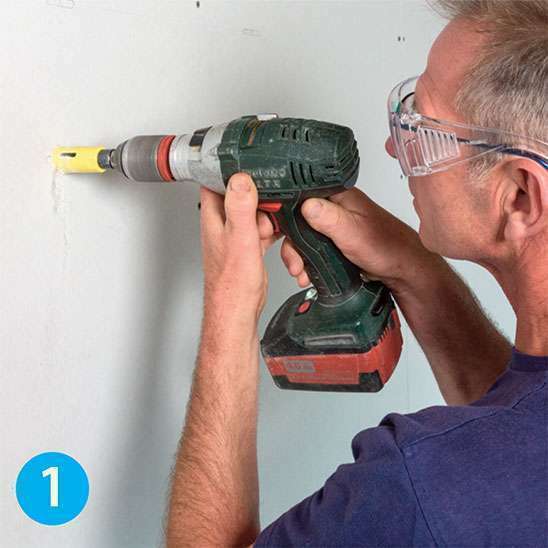
Step 1
Drill a 1” hole centered on your desired location
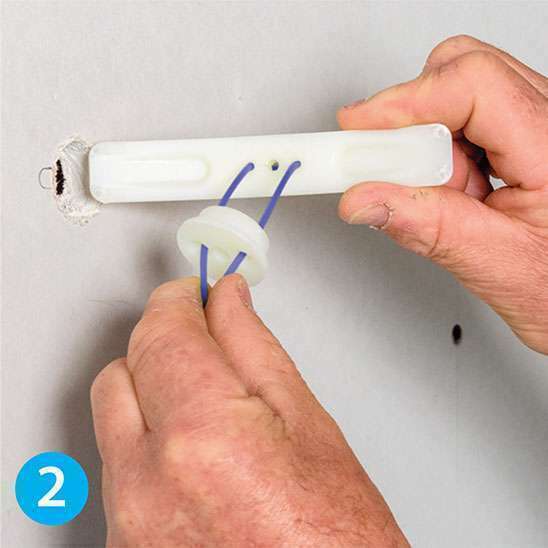
Step 2
Assemble your GeeFix wall anchor system as shown above by threading the supplied blue pullcord through the round wall plug, the curved back plate, and back through the wall plug.
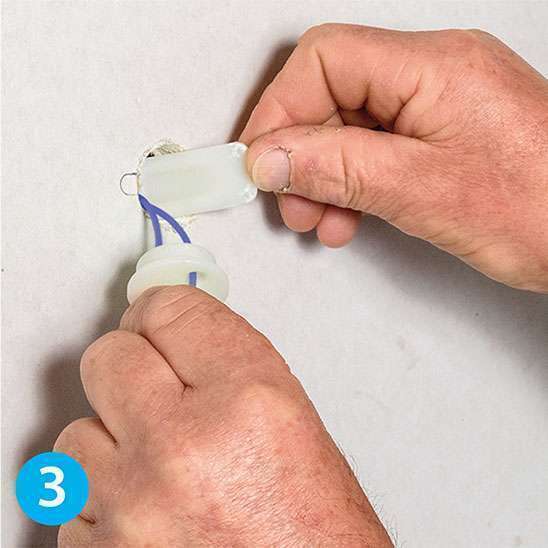
Step 3
While holding onto the pullcord, feed the curved back plate into the hole and center on the 1″ hole
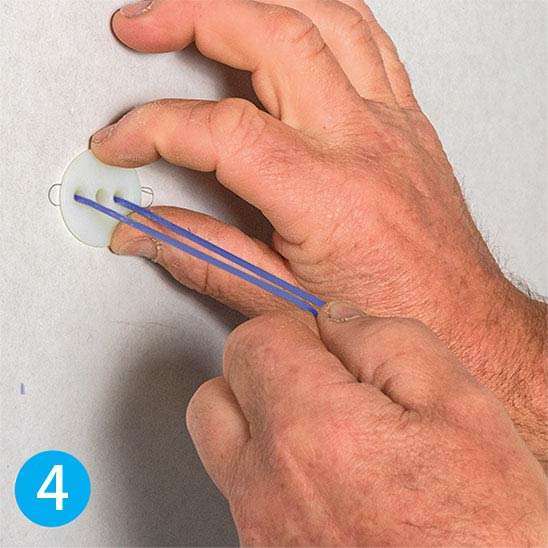
Step 4
While keeping light tension on the pullcord slide the wall plug into the 1″ hole to align with the holes on the back plate
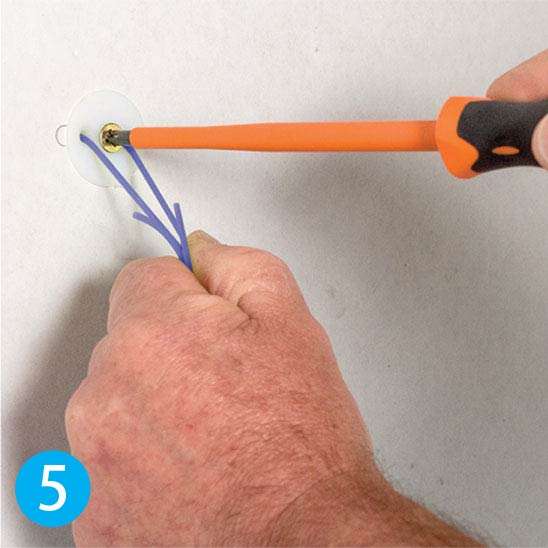
Step 5
While keeping firm tension on the pullcord, screw the large screw into the center hole until the GeeFix becomes firm, but do not overtighten. Keeping tension on the pullcord will keep the back plate in place during installation.
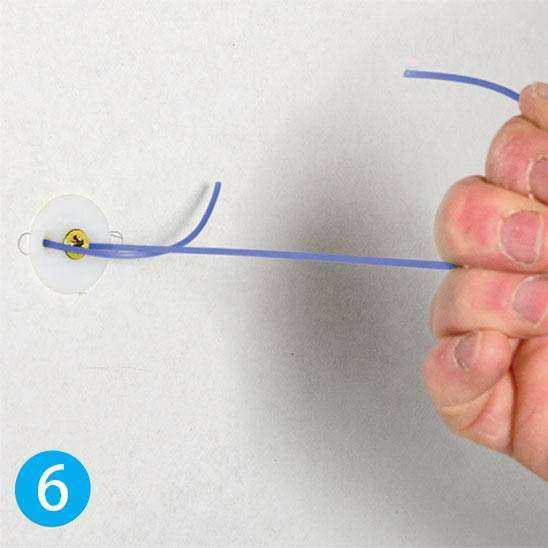
Step 6
Pull out the pullcord but do not discard. You can use the same pullcord on additional GeeFix installations.
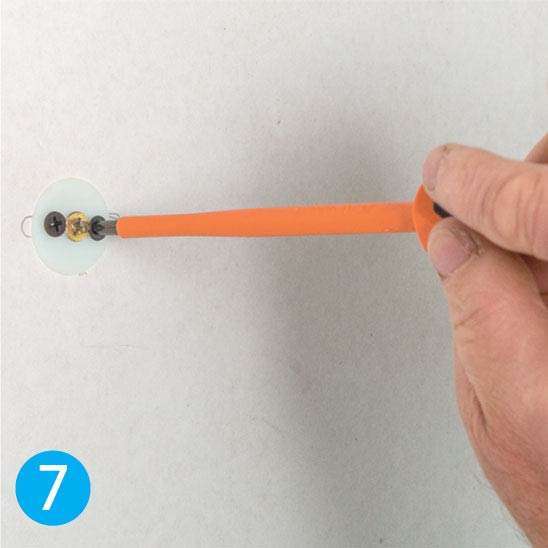
Step 7
Insert the 2 smaller screws on either side of the large screw and tighten until the GeeFix is firmly secured but do not overtighten.
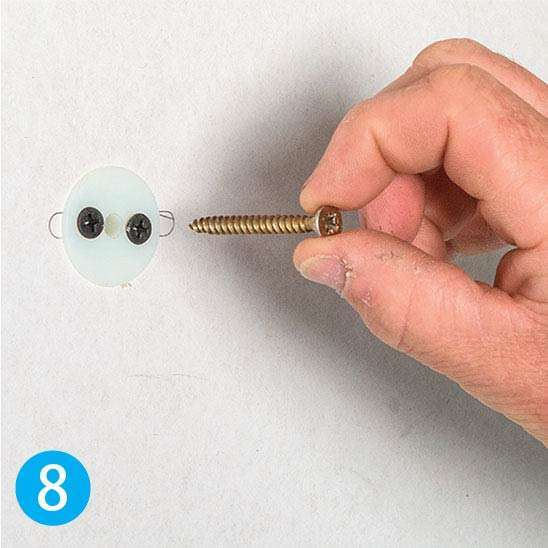
Step 8
Remove the center screw
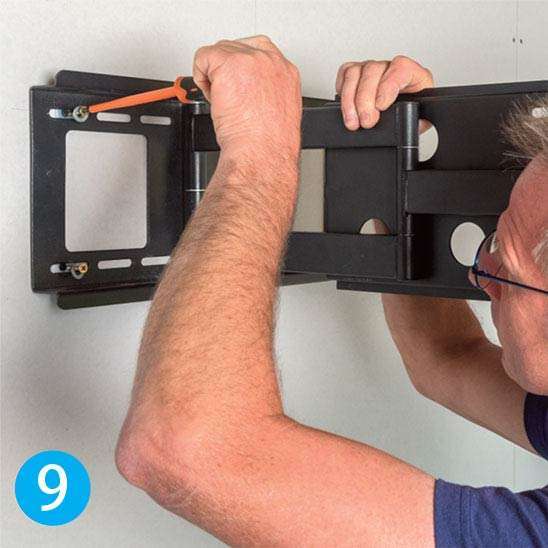
Step 9
Now that your GeeFix system is installed, you can either use the center screw to fix your item, or use your own mounting hardware in its place.
Buy GeeFix Drywall Anchors
-
Pack of 4 GeeFix Plasterboard Fixings
£6.08GeeFix Plasterboard Fixings are a versatile plasterboard drywall anchor fixing with unrivaled strength and is suitable for all types of material including plasterboard, hardboard, plywood, sheet metal, chipboard, mdf, lath, plaster and other materials. Ideal for mounting heavy items such as flat screen TVs, radiators onto plasterboard cavity walls.
-
Pack of 8 GeeFix Plasterboard Fixings
£11.08GeeFix Plasterboard Fixings are a versatile plasterboard drywall anchor fixing with unrivaled strength and is suitable for all types of material including plasterboard, hardboard, plywood, sheet metal, chipboard, mdf, lath, plaster and other materials. Ideal for mounting heavy items such as flat screen TVs, radiators onto plasterboard cavity walls.
-
Trade Pack of 25 GeeFix Plasterboard Fixings
£18.87GeeFix plasterboard fixings are a versatile plasterboard drywall anchor fixing with unrivaled strength and is suitable for all types of material including plasterboard, hardboard, plywood, sheet metal, chipboard, mdf, lath, plaster and other materials. Ideal for mounting heavy items such as flat screen TVs, radiators onto plasterboard cavity walls.
-
Trade Pack of 50 GeeFix Plasterboard Fixings
£37.21GeeFix Plasterboard Fixings are a versatile plasterboard drywall anchor fixing with unrivaled strength and is suitable for all types of material including plasterboard, hardboard, plywood, sheet metal, chipboard, mdf, lath, plaster and other materials. Ideal for mounting heavy items such as flat screen TVs, radiators onto plasterboard cavity walls.
Fixing a Radiator to Plasterboard
How to fix a radiator to plasterboard wall
Are you wondering how to hang a radiator on a plasterboard wall? The answer is yes, you can do it! The best fixings for this task are GeeFix. If you searched for “how to hang a radiator on a stud wall” or “fixing heavy radiator to plasterboard wall,” you can trust GeeFix for both plasterboard and stud walls.
Hanging a radiator on a plasterboard wall used to be a challenge. Many plasterboard anchors and screws failed, making the process frustrating. However, with the innovative GeeFix radiator fixings, you can hang your radiator securely. With GeeFix, you fix it once and fix it right!
GeeFix are ideal radiator fixings for plasterboard due to their design.
Attaching a vertical radiator to plasterboard poses no issue with our fixings. Check out some customer photos on our Instagram Page for inspiration.
Radiator Plasterboard Fixings - GeeFix
Gary Williams, a retired plumber with over 30 years of experience, invented GeeFix. We take pride in the fact that we designed and developed it in the UK, and it is manufactured in Shropshire, supporting local industries.
He created GeeFix to secure heavy items to plasterboard and drywall walls. Modern homes often use studwork and plasterboard, making GeeFix the ideal choice for mounting heavy objects, such as TVs, radiators, towel rails, shelving, cabinets, cupboards, mirrors, and curtain rails.
These fixings are also great for reattaching objects to plasterboard when other types have failed. For example, if a radiator pulls away from the wall, you can install a GeeFix anchor in the same spot as the old one, often reducing the repair work needed on the plasterboard.
Additionally, GeeFix adapts well for smaller items, like bathroom accessories, where fixing holes are close together. In these scenarios, you can use one fixing to secure the item by leveraging the backplate’s length for extra support.
So if you are wondering what are the best plasterboard fixings for radiators, the answer is GeeFix without a doubt. They are the strongest plasterboard radiator fixings on the market.
Shop GeeFix


Fixing Radiator to Plasterboard
How to hang a radiator on a plasterboard wall using GeeFix. You can hang a radiator on plasterboard easily with GeeFix using the instructions below:

Step 1
Drill a 1” hole centered on your desired location

Step 2
Assemble your GeeFix wall anchor system as shown above by threading the supplied blue pullcord through the round wall plug, the curved back plate, and back through the wall plug.

Step 3
While holding onto the pullcord, feed the curved back plate into the hole and center on the 1″ hole

Step 4
While keeping light tension on the pullcord slide the wall plug into the 1″ hole to align with the holes on the back plate

Step 5
While keeping firm tension on the pullcord, screw the large screw into the center hole until the GeeFix becomes firm, but do not overtighten. Keeping tension on the pullcord will keep the back plate in place during installation.

Step 6
Pull out the pullcord but do not discard. You can use the same pullcord on additional GeeFix installations.

Step 7
Insert the 2 smaller screws on either side of the large screw and tighten until the GeeFix is firmly secured but do not overtighten.

Step 8
Remove the center screw

Step 9
Now that your GeeFix system is installed, you can either use the center screw to fix your item, or use your own mounting hardware in its place.
Challenges of Mounting Radiators on Plasterboard
Attaching a radiator directly to plasterboard can lead to several potential problems, primarily due to the material’s structural limitations and heat sensitivity. Here are some of the key issues you might encounter:
Weight Bearing Capacity
Plasterboard, also known as drywall or gypsum board, is not designed to support heavy loads. Radiators can be quite heavy, especially when filled with water, and mounting them directly onto plasterboard can lead to structural damage. Over time, this can cause the plasterboard to sag or even fail, potentially causing a safety hazard.
Heat Conductivity
Plasterboard is a relatively poor conductor of heat. When a radiator is attached directly to it, the heat generated by the radiator might not be efficiently distributed throughout the room. This can lead to uneven heating, with areas closer to the radiator being significantly warmer than those farther away.
Risk of Fire
While plasterboard is fire-resistant to some degree, it is not completely fireproof. Directly attaching a radiator can potentially increase the risk of fire if the radiator becomes too hot and the plasterboard is not adequately insulated or protected.
Thermal Expansion and Contraction
Radiators undergo significant temperature fluctuations as they heat up and cool down. Plasterboard is not designed to withstand these extreme temperature changes without some form of reinforcement or insulation. Over time, this can lead to cracks or other forms of damage in the plasterboard.
Fixing Points and Brackets
Attaching a radiator securely to plasterboard requires special consideration. Traditional wall plugs and screws might not provide enough support. Specialized brackets or anchors designed for plasterboard are needed, and even then, they may not provide the same level of stability as mounting on a solid wall.
Moisture Absorption
In areas where moisture levels are high, such as bathrooms, kitchens, or laundry rooms, plasterboard can be susceptible to damage. Mounting a radiator directly onto plasterboard in such environments can exacerbate this issue, potentially leading to mold growth, warping, or deterioration of the plasterboard.
To mitigate these problems, it’s advisable to install radiators on a solid, load-bearing surface, such as a brick or concrete wall. If attaching a radiator to plasterboard is unavoidable, consider using additional measures like spreading the load with a large piece of plywood or using specialized fixings designed for this purpose. It’s also crucial to consult with a professional installer or contractor to ensure that the installation is carried out safely and securely.
Types of Plasterboard Fixings
There are several types of plasterboard fixings available, each designed to provide secure support for fixtures and fittings. Below are the top five reputable brands known for producing high-quality plasterboard fixings:
Geefix
This is the strongest plasterboard fixing on the market. Designed for heavy loads such as radiators. It utilizes a unique expanding mechanism to provide a strong and secure anchor.
Fischer
Fischer is a well-established German company that manufactures a wide range of fixing solutions, including those suitable for plasterboard.
Rawlplug
Rawlplug is a renowned brand in the construction industry, known for its comprehensive selection of fixings and fasteners, including those designed for plasterboard applications.
GripIt
GripIt is a British company known for its innovative plasterboard fixings, particularly the GripIt Plasterboard Fixings, which are widely used for heavier loads.
TOGGLER
TOGGLER is known for its range of specialized anchors and fixings, including those designed for use in plasterboard and other hollow wall materials.
Fixing items with more than one anchor point
If you’ve done DIY projects, you’ve noticed many wall-mounted items have more than one anchor point, like curtain rails or toilet roll holders. When you have a well-placed stud, installation becomes easy. But what do you do when the studs don’t align with your plans and that toilet roll holder must go on a cavity wall to look right?
In the past, installing these items required multiple wall fixings, costing time and money. Then, in 2015, GeeFix introduced a revolutionary solution: a hollow wall fixing with a long back-plate that acts like studwork. Curious about this innovation? Check out the photograph below.

The GeeFix back-plate spans 120mm, the longest of any plasterboard fixing available. In the accompanying image, the fixing points on the curtain rail bracket are 40mm apart.
Here, the lower fixing point screws directly into the sturdy nylon back-plate, eliminating the need for a second cavity wall fixing. This back-plate size enhances versatility. For example, with a bracket that has two fixing points spaced 90mm apart, you can position the anchor points along the back-plate, securing one anchor into each wing.
Want to learn more about applying GeeFix cavity wall fixings? Email gary@geefix.com or reach out via our online submission form here.
About GeeFix
GeeFix was invented by a plumbing and heating engineer with over 40 years of experience. We are proud that GeeFix was designed and developed in the UK and manufactured in Shropshire, supporting local industries.
We created GeeFix to securely attach heavy items to plasterboard and drywall walls. Modern homes largely consist of studwork and plasterboard, making GeeFix ideal for mounting heavy objects like TVs, radiators, towel rails, shelving, cabinets, mirrors, and curtain rails.
You can also use these hollow wall fixings to reattach items to plasterboard walls when other fixings fail. For instance, if a radiator pulls away from the wall, you can install a GeeFix fixing in the same spot as the failed one, often reducing repair work on the plasterboard.
Additionally, GeeFix adapts well for smaller items like bathroom accessories, where fixing holes are closely spaced. In these cases, one fixing can secure the item by leveraging the backplate’s length for extra support.
Plasterboard Repair – How to fix loose drywall anchor
If you have a loose drywall anchor, follow these steps to fix it.
Plasterboard repair – Fix holes in plasterboard
GeeFix fixings not only provide unrivalled strength, but also work effectively to repair installations where other types of fixings have failed.
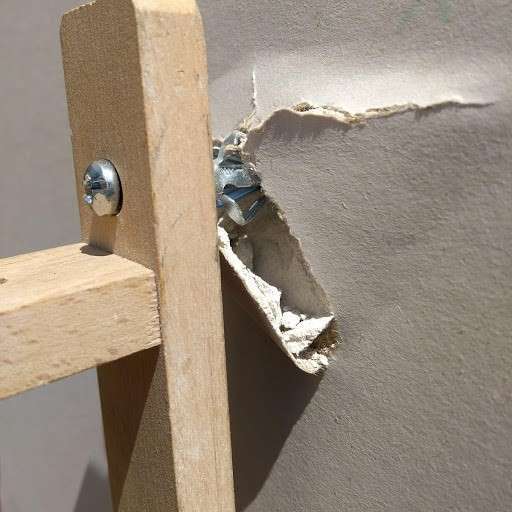
1. Remove the installation: First, take out the old fixing and fold in the damaged plasterboard. Next, place a guide—made from a scrap piece of wood or plasterboard—over the center of the failed hole. Then, re-drill using a 25mm hole saw.
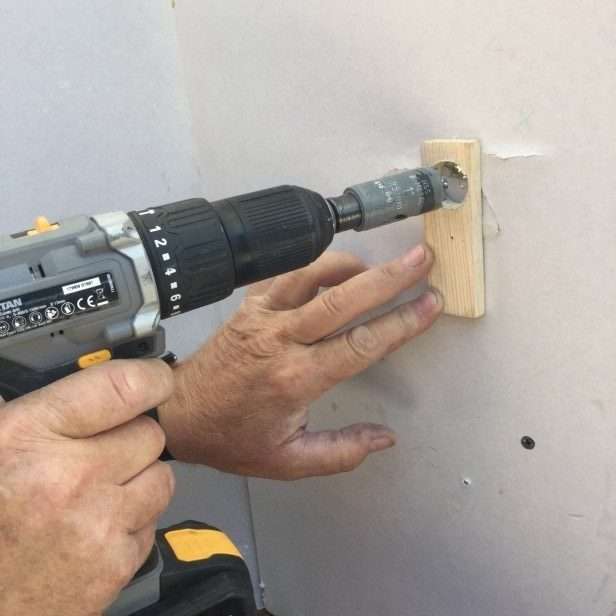
2. Insert the GeeFix: Pull on the blue nylon cord and tighten the centre screw.

3. Finishing the Fixing: Afterward, pull out the nylon cord and install the two side retaining screws. Then, remove the center screw and pull away the loose plasterboard. Use polyfilla to repair the area.
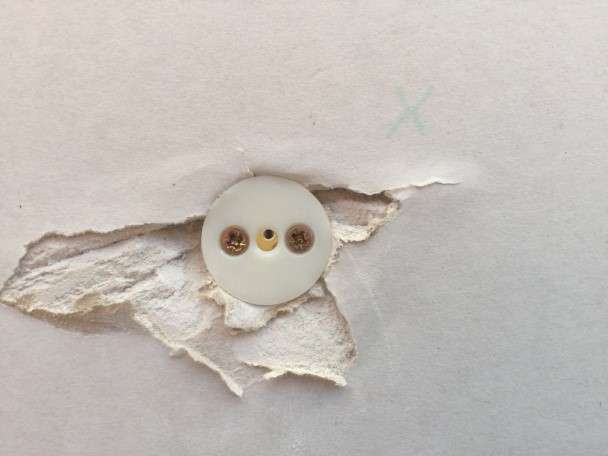
4. Refix the Item: Finally, use the center screw to reattach the item.
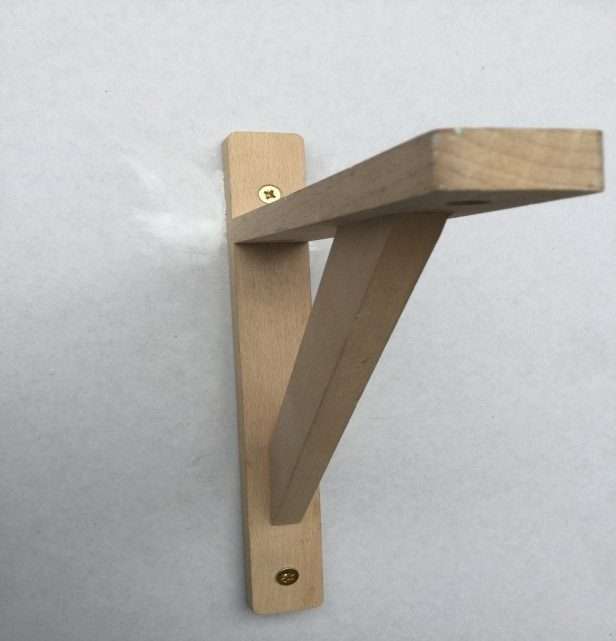
About GeeFix
A plumbing and heating engineer with over 40 years of experience invented GeeFix. We proudly announce that GeeFix is designed, developed, and manufactured in Shropshire, supporting local industry and British business.
The development aimed to create a fixing that securely anchors heavy items to plasterboard and drywall walls. Modern homes utilize studwork and plasterboard, making GeeFix ideal for fixing heavy objects like TVs, radiators, towel rails, shelving, cabinets, cupboards, mirrors, and curtain rails.
Moreover, these hollow wall fixings also allow you to refix objects to plasterboard walls when different types of fixings have failed. For instance, when a radiator comes away from the wall, you can install a GeeFix in the same spot as the failed fixing. This approach can significantly reduce the amount of work needed to repair the plasterboard.
Additionally, you can adapt these fixings for smaller objects, such as bathroom accessories, where fixing holes are close together. In these cases, one fixing can secure the item by utilizing the backplate length in the cavity for extra anchor points.
How to Fix a Curtain Pole onto a Plasterboard Wall
How to Fix a Curtain Pole onto a Plasterboard Wall
When you want to fix a curtain pole onto a plasterboard wall, you might encounter some challenges. Thankfully, customers often find that GeeFix fixings provide a reliable solution!
For example, Dave discovered our website and read glowing independent reviews. He decided to try our fixings for mounting two curtain rails and two heavy mirrors on his plasterboard walls. His verdict? “They are brilliant—exactly as shown on the website; easy to fit and feel solid once installed, unlike all the other plugs and expanding fittings I’ve tried over the years.”
If you, like Dave, struggle to fix curtain rods to plasterboard, give GeeFix a try. You won’t be disappointed!
GeeFix Hollow Wall Anchors
GeeFix anchors offer several advantages that set them apart from other wall fixings on the market:
- A single GeeFix accommodates substrates between 3mm and 75mm thick with suitable cavity wall fixing screws.
- They work with a cavity gap as small as 30mm.
- GeeFix anchors are easier to use than umbrella-style fixings. You don’t need to feed the final fixing through the item before installation.
- They can be used with vapor barriers without damaging the barrier.
- GeeFix employs standard screws for the final fixing instead of bolts.
About GeeFix
A plumbing and heating engineer with over 40 years of experience invented GeeFix. We take pride in the fact that we design, develop, and manufacture it in Shropshire, supporting local industry and British business.
GeeFix aims to create a secure fixing for heavy items on plasterboard and drywall walls. Modern homes often feature studwork and plasterboard, making GeeFix ideal for hanging heavy objects such as TVs, radiators, towel rails, shelving, cabinets, cupboards, mirrors, and curtain rails.
Additionally, these hollow wall fixings allow you to reattach objects to plasterboard walls where other fixings have failed. For instance, if a radiator pulls away from the wall, you can install a GeeFix in the same spot as the failed fixing. This method often reduces the amount of work needed to repair the plasterboard.
Furthermore, you can adapt these fixings for smaller items, like bathroom accessories, where fixing holes are close together. In such cases, one fixing can secure the item by utilizing the backplate’s length in the cavity for extra support.
How to put up a curtain pole on plasterboard using Geefix?
Many people ask the question “Can you put a curtain pole up on plasterboard?” The answer is yes using GeeFix. Take a look below at how easy it is to install our plasterboard fixings.
Step 1
Drill a 1” hole centered on your desired location
Step 2
Assemble your GeeFix wall anchor system as shown above by threading the supplied blue pullcord through the round wall plug, the curved back plate, and back through the wall plug.
Step 3
While holding onto the pullcord, feed the curved back plate into the hole and center on the 1″ hole
Step 4
While keeping light tension on the pullcord slide the wall plug into the 1″ hole to align with the holes on the back plate
Step 5
While keeping firm tension on the pullcord, screw the large screw into the center hole until the GeeFix becomes firm, but do not overtighten. Keeping tension on the pullcord will keep the back plate in place during installation.
Step 6
Pull out the pullcord but do not discard. You can use the same pullcord on additional GeeFix installations.
Step 7
Insert the 2 smaller screws on either side of the large screw and tighten until the GeeFix is firmly secured but do not overtighten.
Step 8
Remove the center screw
Step 9
Now that your GeeFix system is installed, you can either use the center screw to fix your curtain pole. The image above shows a TV bracket, but a curtain pole or other heavy items can be fixed.




